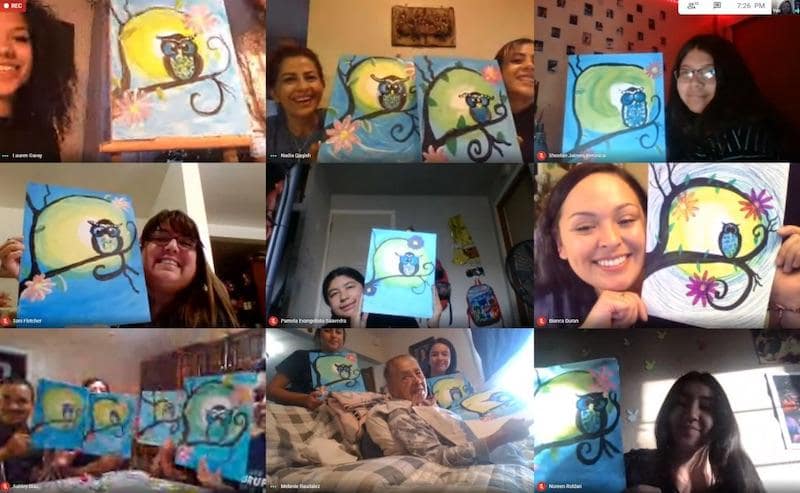
04 Aug 6 SEL Strategies for Your Virtual Classroom: Support During COVID
Whether we like it or not, distance learning is here. And while nothing can take the place of in-person teaching, there are some very easy things we can do as educators to create a classroom experience that strengthens the social and emotional wellbeing of our students. We’ve gathered several social emotional learning strategies for your virtual classroom that you can implement to ensure a healthy and safe learning environment. An environment that is essential to getting as close to in-person teaching as possible.
Start with Social Emotional Check Ins
Create student check in opportunities
During this strange time, it’s even more necessary to help our students get through some of the trauma and stress associated with a global pandemic.
Checking in with your students before, during, and after class quickly lays the foundation for a safe and caring environment. This is especially important in online settings. Student check-ins can increase their comfort level and limit the initial angst of remote communication that can interfere with the learning process.
In virtual settings, emotional check-ins are especially important because you can’t always observe your students’ body language. Behavior is communication. And body language is one of the clearest forms of communication. Daily check ins help mitigate this obstacle.
Student check-ins should take place during every class, especially if that class only meets once or twice a week. How many times you feel you need to do one, is up to you. But setting and scheduling a time for emotional check-ins make them something to look forward to and hold us accountable as educators.
In our flagship cultural arts and SEL program, The Write of Your L!fe, one of our check-ins is called “Unlock the Week.” It’s a time for our instructors to ask each student about the highs and lows of their weeks. The students engage with SEL by practicing their self-awareness and social awareness, as they share their feelings and listen to others.
The Write of Your L!fe also uses something called the Wonder Jar. While Unlock the Week has more specific prompts, the Wonder Jar can be used for when students prefer anonymity in their sharing. All post-it entries are thrown into a jar, anonymously and if the student wishes to discuss, they can. The main goal is to share in a safe space that encourages honesty without the fear of judgement.
Consider the chat box for privacy
Some of our teachers recognize that not all students want to share out loud because they may be uncomfortable of who is listening nearby. In our virtual The Write of Your L!fe, our instructors often encourage the chat box for those circumstances.
It really all depends on their comfort level, but it is something that needs consideration.
If you need help brainstorming, below are a few ideas for daily check in questions for remote learning.
- What was your peak? What was your valley
- How are you feeling now?
- What did you learn this week
- What have you learned about yourself this week
- What have you learned about others
- What have you been unsure of this week?
- What challenged you this week?
- What made you laugh or smile this week?one
Encourage Family Engagement
Schedule check ins with family
With distance learning, you are teaching across completely different classrooms. It’s helpful to remember that however many students you have is how many different environments you’re teaching in…at once! And what’s in their environment could be beneficial to their learning process or entirely detrimental. Checking in with their family members will help you navigate these challenges.
Families may be struggling more now than ever before. Pandemic stress, actual illness, and the burden of financial instability, all play a major role in how stable and healthy the environment is for your student to learn and thrive in. By checking in with family members and offering any emotional support, you’re indirectly helping your student. This will also help determine which students need more support.
Implement SEL Competencies
Teach strategies for organization and encourage self-management
Stay organized to teach self-regulation and management during a time they need it most.
One of the benefits of social-emotional learning is that it teaches students how to set positive goals and make sound decisions. One of the core competencies of SEL is self-management. Now that students are learning from home, focusing on following schedules and tasks through completion, is especially helpful during this time.
Distance learning is hard on everyone. Though some students might need more explicit directions. It could be because they’re a different type of learner or because their environments are harder to concentrate in, whatever the case, anticipate this need ahead of time to avoid any unnecessary frustration. Ramping up your student check ins is also great for determining this.
Support Students w/ Creative Outlets
Encourage self-expression
Creative self expression can come in many forms. At The Write of Your L!fe, we focus on art mediums like writing, painting, or drawing for our students to express themselves. We also use narrative therapy as a way to encourage reflective writing on past or present situations to help them heal and transform their trauma into resilience.
Finding their own unique voice, and expressing it to others, is a major component of our curriculum.
After the 12 weeks in The Write of Your L!fe, the students have completed a poem, piece of artwork, skit/play or some additional artistic representation. They are curated into an anthology and they each leave with a publishable work.
Our self-publishing component is not only huge in helping our students express themselves but the completion and tangible work they’ve created, strengthens confidence and self-esteem.
In the past, out student graduations have culminated in a virtual paint night, inviting and engaging the family members in a guided paint project.

It serves to strengthen familial bonds, as well as share in a social activity through creative self-expression with their peers.
Equip and Support Students w/ Compassion
Assign projects where students help
Assigning projects where students are helping one another elicits the best from them. Encourage creative assignments that demand more compassion from them. This can be anything from helping younger siblings read or do homework, to calling or sending a card to someone who needs it most—anything to get them out of themselves.
Taking action can ease depression and anxiety, as it simultaneously builds relationship skills, and enhances one of the core SEL competencies, social-awareness.
Emotional Support Strategies
Practice and teach mindfulness
Practicing mindfulness exercises can relieve stress and increase focus. Mindfulness practices like mediation are great opportunities for your students to check in with themselves.
There are a variety of apps you can encourage them to use or you can pull exercises from.
Some have a ton of free meditations, (like Insight Timer), and others are geared more for children, (not-for-profit Smiling Mind).
Setting time aside during class teaches students that coping with stress and managing their emotions is just as much of a priority of the actual within the class. Incorporating these social emotional learning strategies can lay the foundation for an effective virtual classroom.


